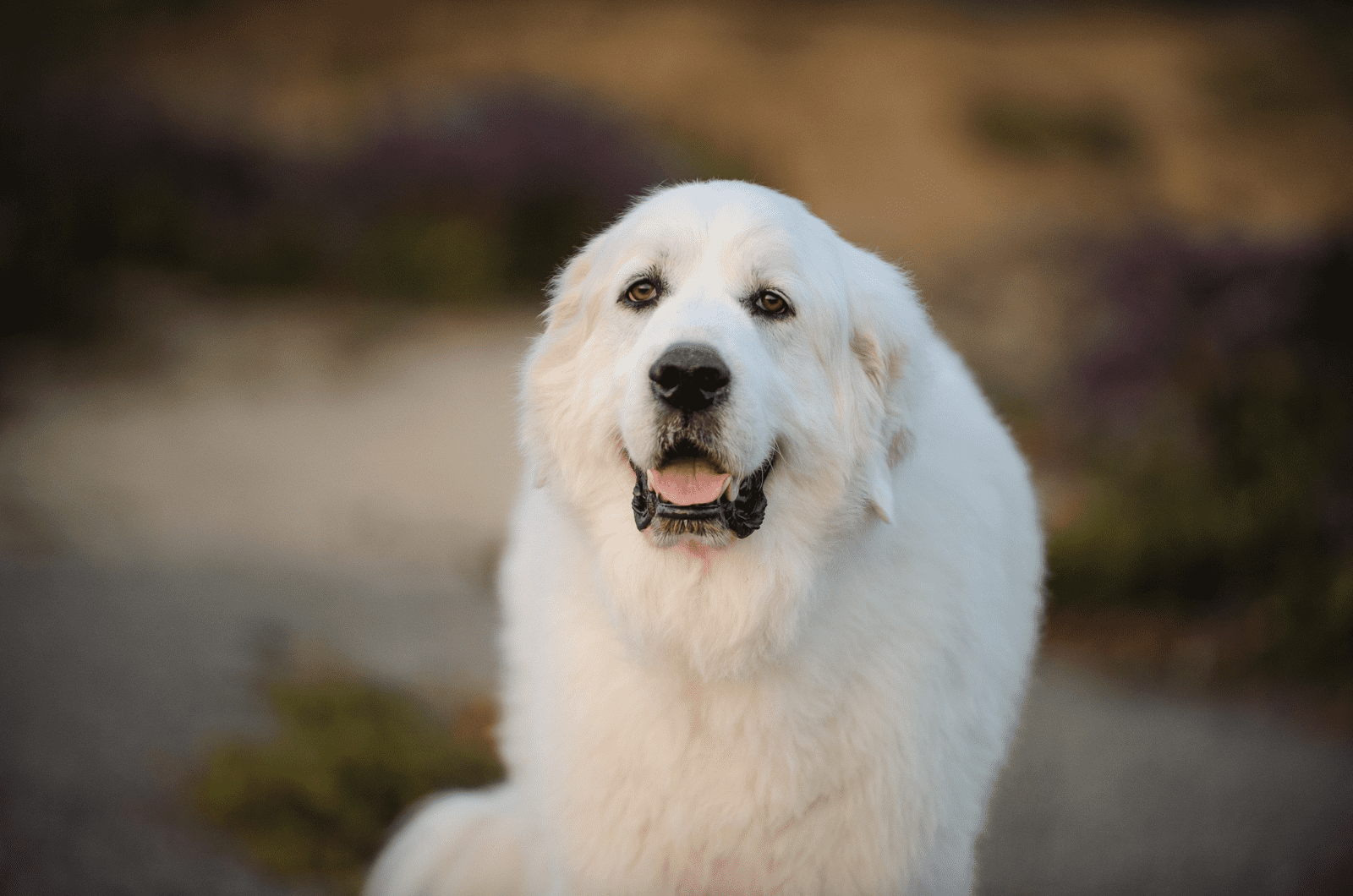Briards have them, Saint Bernards have them, and our Great Pyrenees dogs have them!
We’re talking about those floppy parts of skin and bone you see on both front paws and rear paws. Those are called dew claws, and today, we will discuss Great Pyrenees dew claws and let you in on a secret about why they are so interesting.
A Great Pyrenees puppy is destined to be a working dog. His ancestors were working/herding dogs with impeccable ethics. Even though their herding days are almost over, Great Pyrenees still have something left from those ancient times. It’s their dew claws.
Surprise, surprise – Great Pyrenees come with double dew claws, and they’re placed on the dog’s rear legs.
What most dog owners who have just met a Great Pyrenees don’t realize is that the double claws are a part of the breed. In other words, it’s their signature sign! However, this is in no case proof that your Great Pyr is a mixed breed pup.
But, the question is: Should my dog be with or without its dew claws?
What are dew claws in the first place? How should I, as an owner, deal with dew claws?
Believe it or not, most new Great Pyrenees dog owners worry about these dew claws more than how much a Great Pyr sheds!
If you stay tuned, you’ll learn all about Great Pyrenees dew claws and their importance.
What Are Dog Dew Claws & Why Do Great Pyrenees Dogs Have Extra Dew Claws?
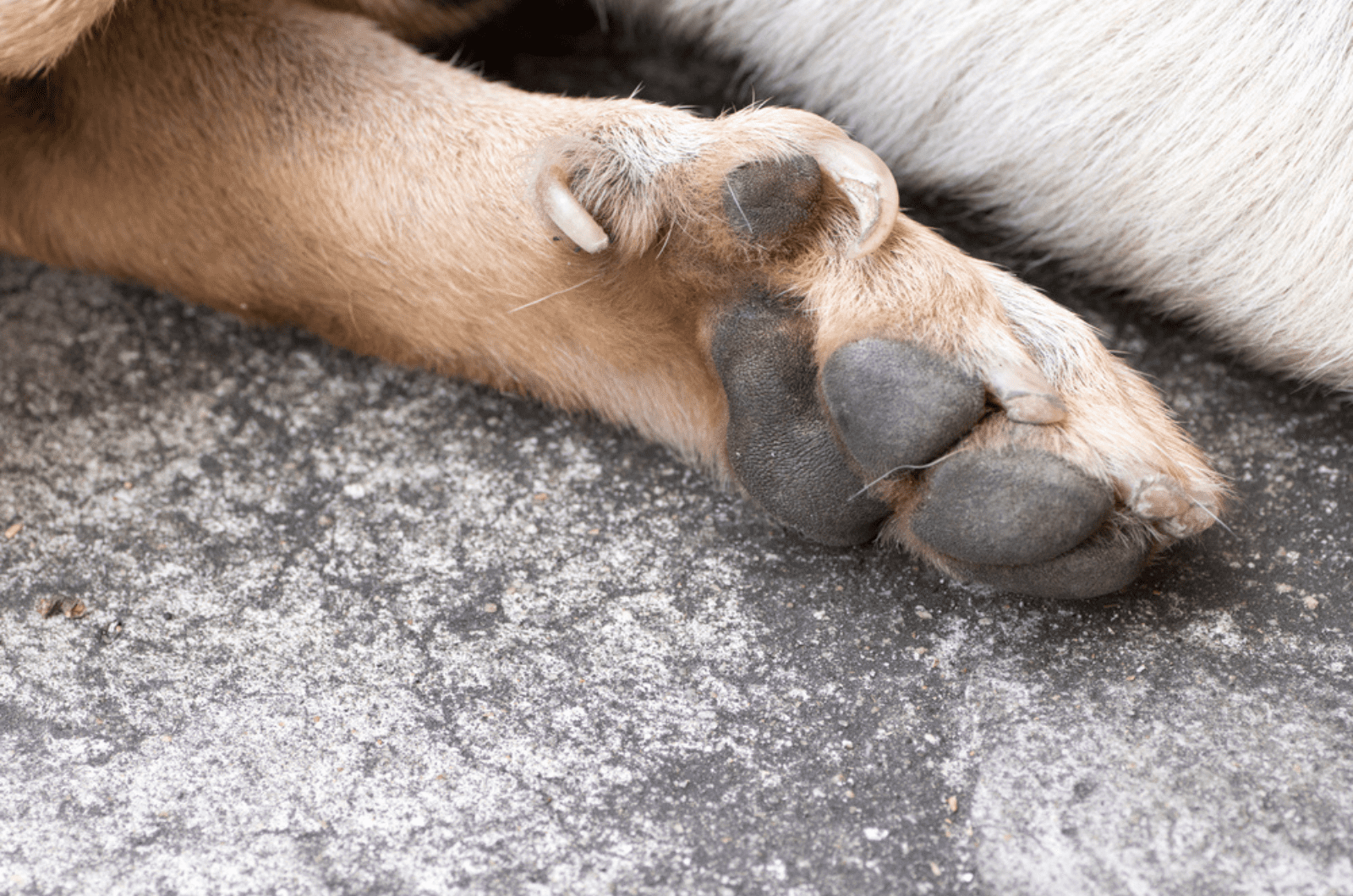
If you’ve ever shaken a furry paw, then you probably have noticed a little bump near the dog’s paw. Those who have looked deep into it know that’s a little digit with a nail. So, is it a finger? Or, maybe a thumb that lost its function?
Are dew claws even normal?
Hold your horses… we’re about to go in-depth about dew claws, especially those of the Great Pyrenees dogs.
To understand dew claws, we must take a little trip back to ancient times. You see, our dogs were not the same in ancient times. Those canines were wild, and they did a lot of wild things, including climbing up trees.
Yup, ancient canines used to climb trees just like kitties! They needed a better grip to perform these escapades, so mother nature took care of it. Enter front and back dew claws.
You can absolutely think of dew claws as thumbs. They lay a bit higher on the dog’s foot, but separate from the other digits. The evolution affected the position of the dew claws. Since their use was no longer needed, dew claws eventually climbed up high on the foot and stayed there.
Dew claws are still pretty functionless today, with some exceptions to the rule. If you see a dog featuring dew claws, it’s mostly to help him perform some tasks better like search and rescue missions. Also, police and military dogs seem to keep their dew claws to get a better grip on the terrain.
What’s certain is that all dog breeds have them. Our Great Pyrenees has single dew claws on each front leg. However, his rear legs come with double dew claws. Still, some dog breeds like the Pyr’s big buddy, the Saint Bernard, have double dew claws on all four legs.
Great Pyrenees Dew Claws
The next question we must address is, Why do Great Pyrenees have double dew claws on their hind legs?
To understand this issue, we must know where this dog breed comes from, and why they need dew claws in the first place.
The Great Pyrenees originates from the mountain range of the Pyrenees, located on the border of France and Spain. These dogs were used as skilled workers, keeping the livestock secured and in one place.
If you keep in mind the rocky terrain of their place of origin, you’ll understand why it was crucial for Great Pyr dogs to have double dew claws on their back legs. Dew claws are there to help them run faster, grip uneven terrain better, and help them cling onto something, i.e., to help them climb up a rock or out of a hole in the ground.
Today, the Great Pyrenees is mostly a companion dog with terrific guardian skills. Their dew claws are pretty much useless, but it’s better to keep them on. Why? You’ll see that pretty soon.
What Are The Two Types Of Dew Claws?
What you need to understand first is that there are differences in many dog breeds in terms of dew claws and their number. There are dog breeds that have no extra claws or digits at all. However, those breeds with single dew claws on all four legs are more common.
Our Great Pyrenees belongs to the rare group of dogs with double dew claws.
Do these differences mean there are even different types of dew claws? Technically, yes. We can distinguish two types of dew claws, but there is no link between a type and a particular dog breed.
If you take your dog to the vet and let him have an X-ray of your pup, you may see two types of dew claws:
– a dew claw connected to the leg by bone
– a dew claw connected to the leg by the skin
Dogs that have dew claws connected by skin don’t really have use of them. They’re remains of some ancient time when that specific digit was in use. Today, they can only bother the dog and cause severe injuries if they get ripped off accidentally in action.
Dew Claws Connected By Bone
The Great Pyrenees has dew claws attached to the leg by skin and bone. This means their dew claws are functional and stand there for a reason. They helped Pyrs in the past, and they still help them today.
Dew claws connected by the bone are actual digits, and as such, they should not be removed. Most reliable Great Pyrenees breeders don’t allow this practice. In fact, it’s against the breed standard to remove dew claws.
Without dew claws, the Great Pyrenees can’t enter dog shows because the American Kennel Club (AKC) says that’s a serious fault.
Is Great Pyrenees’ Dew Claws Amputation A Good Idea?
Let’s stop for a moment here…
So, the Great Pyrenees has double dew claws placed on its hind legs, which are connected by skin and bone. This means he’s literally got two extra digits on two legs. Why should anyone want to remove a dog’s digits on purpose, especially if they’re not considered a health risk?
I feel like many people don’t even realize that removing dew claws is not a routine surgery like some dog experts claim it is. This is a serious procedure that should be done by professionals only.
Dew claw removal surgery is not something you can do in under 10 minutes, but we’ll get to the operation itself soon.
Sadly, I’ve seen many breeders removing dew claws too early, especially with this dog breed. They even include the cost of this procedure in the initial purchase price of a Great Pyr puppy!
In case you didn’t notice the elephant in the room, the Great Pyrenees is a giant dog breed. The thing with giant dog breeds is that they grow up fast in terms of their body size, but they reach maturity rather late.
The Great Pyrenees can be considered an adult at the age of around 24 months. Any unnecessary surgery or procedure done under that age can affect the dog’s development. For example, dog experts are also against early spay/neuter operations in order to maintain proper development.
For example, if the breeder removes a Pyrs dew claws too early (which they usually do), chances are that dog might have mobility issues or his paws might not develop as they should.
Lastly, let’s call it by its real name: amputation!
Removing dew claws is not just one simple surgery. It’s definitely an amputation that your Pyr doesn’t need.
What Issues Come With Great Pyrenees Dew Claws?
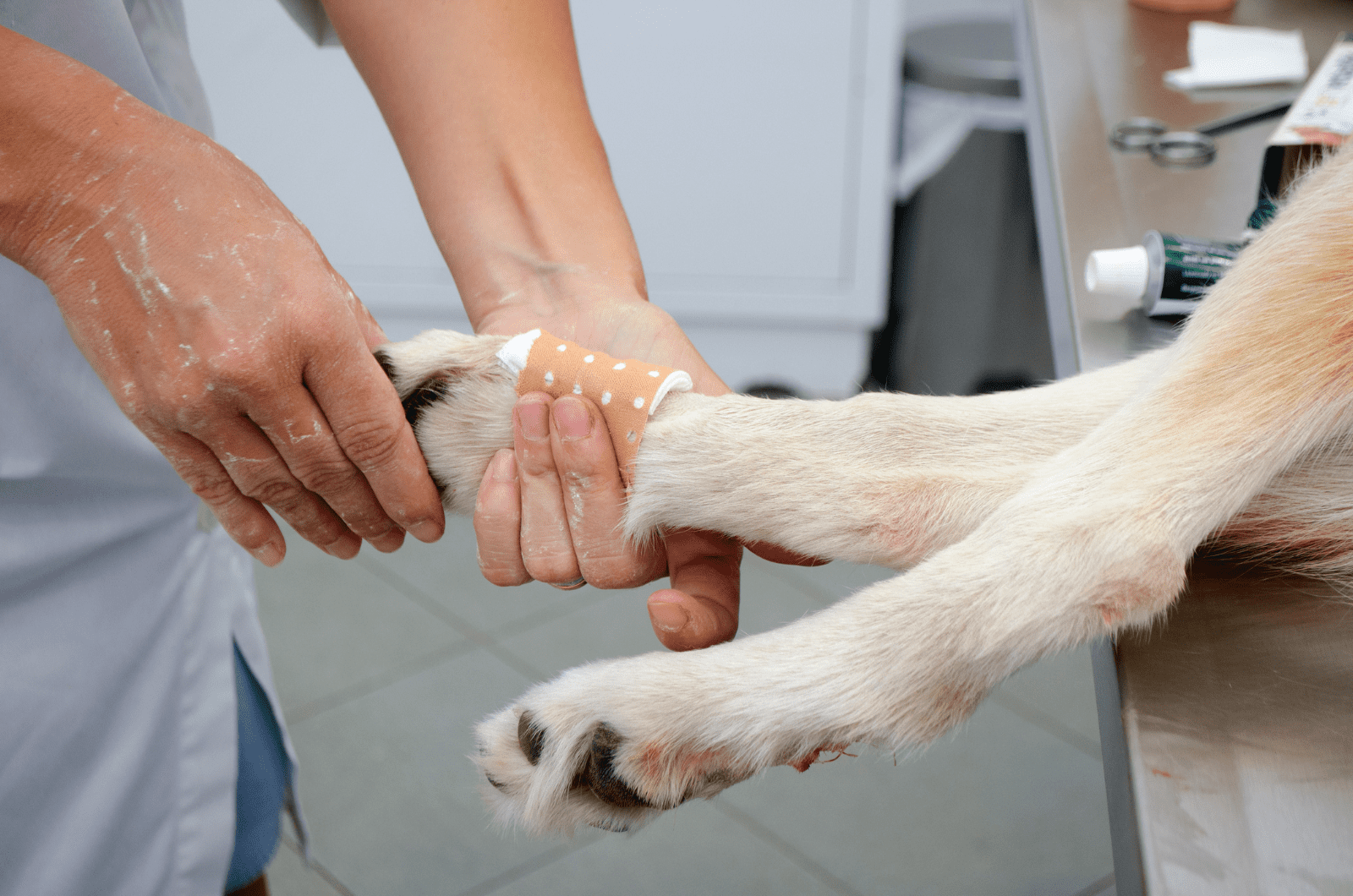
Even though official clubs, such as the Great Pyrenees Club of America, have stated that removal of the dog’s double dew claws is considered faulty, some professionals still claim it’s okay to remove them under certain circumstances.
Of course, the removal is optional, and deciding which dog should have their dew claws removed and which not is completely optional. Here’s why. Some cases that may lead to amputation can be prevented and treated with medications, i.e., infections.
Not everything should be solved by dew claw amputation.
However, sometimes removal is the only option to save the dog’s paw or entire rear leg, depending on how severe the situation is.
Dew Claw Dystrophy
Definitely, the most severe condition that can strike a dog’s dew claws is some sort of dystrophy that brings along infections.
Usually, dystrophy is a wide term that can affect either the entire claws, the nails, or the flesh around a single dewclaw. The situation gets even worse with the Great Pyrenees dog breed if both of their double dew claws get infected.
Sadly, if not treated or if they seem to be too severe to handle, these infections may lead to tumors, and eventually, cancer. This will affect the bone of the dew claws. The only way out is to amputate the dew claws.
If an infection keeps coming back with clear signs of redness, pain, or swelling, that’s an obvious cue your dog may be suffering from either an autoimmune disease or cancer.
Ingrown Dew Claws
Raise your hand if you’ve ever suffered from an ingrown toenail. Many people, including myself, have had issues with ingrown toenails. And, let me tell you something: it hurts like crazy!
Just imagine the amount of pain your dog gets from an ingrown dew claw!
It’s easy for us to see an ingrown toenail, but what about our canine friends? Their paws are covered in fur, and it’s always difficult to notice the first signs of an ingrown dew claw. Only when a dog starts walking unevenly can you suspect something’s wrong.
If your Great Pyr’s training is suffering because he can’t perform the simplest tasks, there might be an issue with its paws. It’s always either an ingrown nail or something stuck between the nails.
The treatment doesn’t have to lead to amputation of the dew claw ligament. Some cases may even be resolved with antibiotics.
Accidents With Dew Claws
Dogs like our Great Pyrenees were once used as herding dogs in a mountain region. This means the terrain was a bit rocky and hard to navigate through. Enter their useful dew claws.
But, how many Great Pyrenees dogs still live in their origin area? Not as many as there used to be.
Today’s Great Pyrs usually live with families. This means the terrain may vary. Chances are, your Great Pyr may get his dew claw injured if it gets caught under a rock, a tree, or something else, i.e., a loose wire.
If your Great Pyrenees is prone to accidents, consult your vet about removing his dew claws to prevent tearing or further complications. Of course, that’s only if you’re not raising a show dog.
Prevention: How Do You Avoid Dew Claw Injuries?
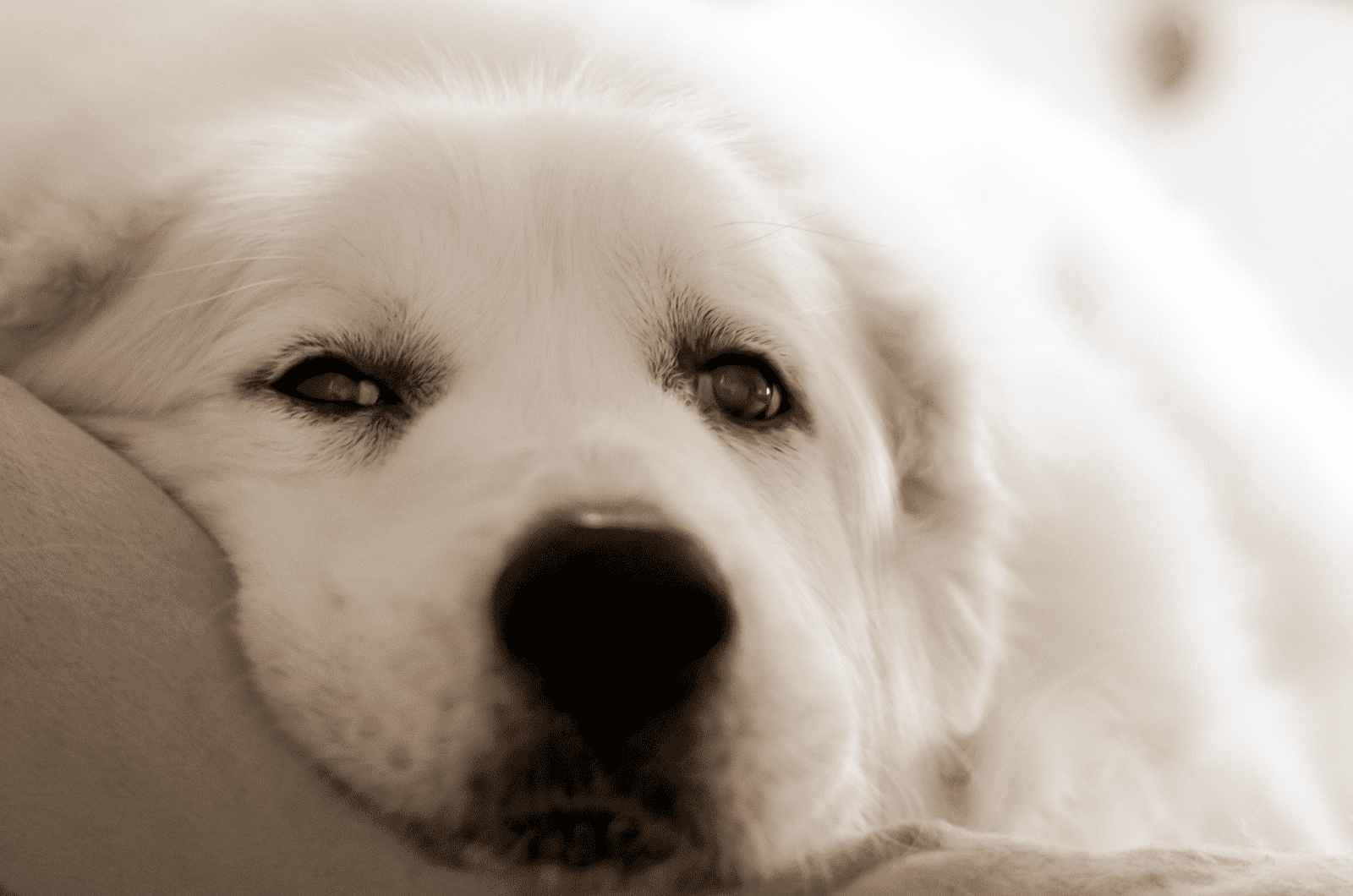
Prevention always comes to the rescue. It’s better to be safe than sorry, especially with something tricky like a dew claw.
Believe it or not, there are ways you can prevent your dog’s dew claws from getting injured. Removing them is not the only option to keep your dog’s paws intact.
We’ve learned so far that dew claws are a dog’s extra toes. Toes have toenails, don’t they? And, what do we do with a dogs’ toenails? We get them trimmed!
Every Great Pyr grooming routine, besides brushing that wonderful coat in several lovely colors, should include trimming of the toenails. If they grow too long, they can cause pain for your dog while he moves around. Basically, your dog’s nails will grow inwards and dig into his feet.
So, either learn how to trim his nails at home or hire a professional groomer to help you. Don’t worry – nail trimming won’t hurt your buddy as long as you don’t cut the vessels in the nail and cause bleeding.
What most dog breeders don’t realize is that removing dew claws should not be mandatory, especially not with dog breeds like the Great Pyrenees.
I recommend these breeders do some research and stop using potential injuries as an excuse for removing dew claws.
As you can see, they are toes with nails that can and must be trimmed. If you keep them nice and tidy, the risks of severe injuries either drop down to a minimum or no injuries at all.
Great Pyrenees Dew Claws: The Process of Removal
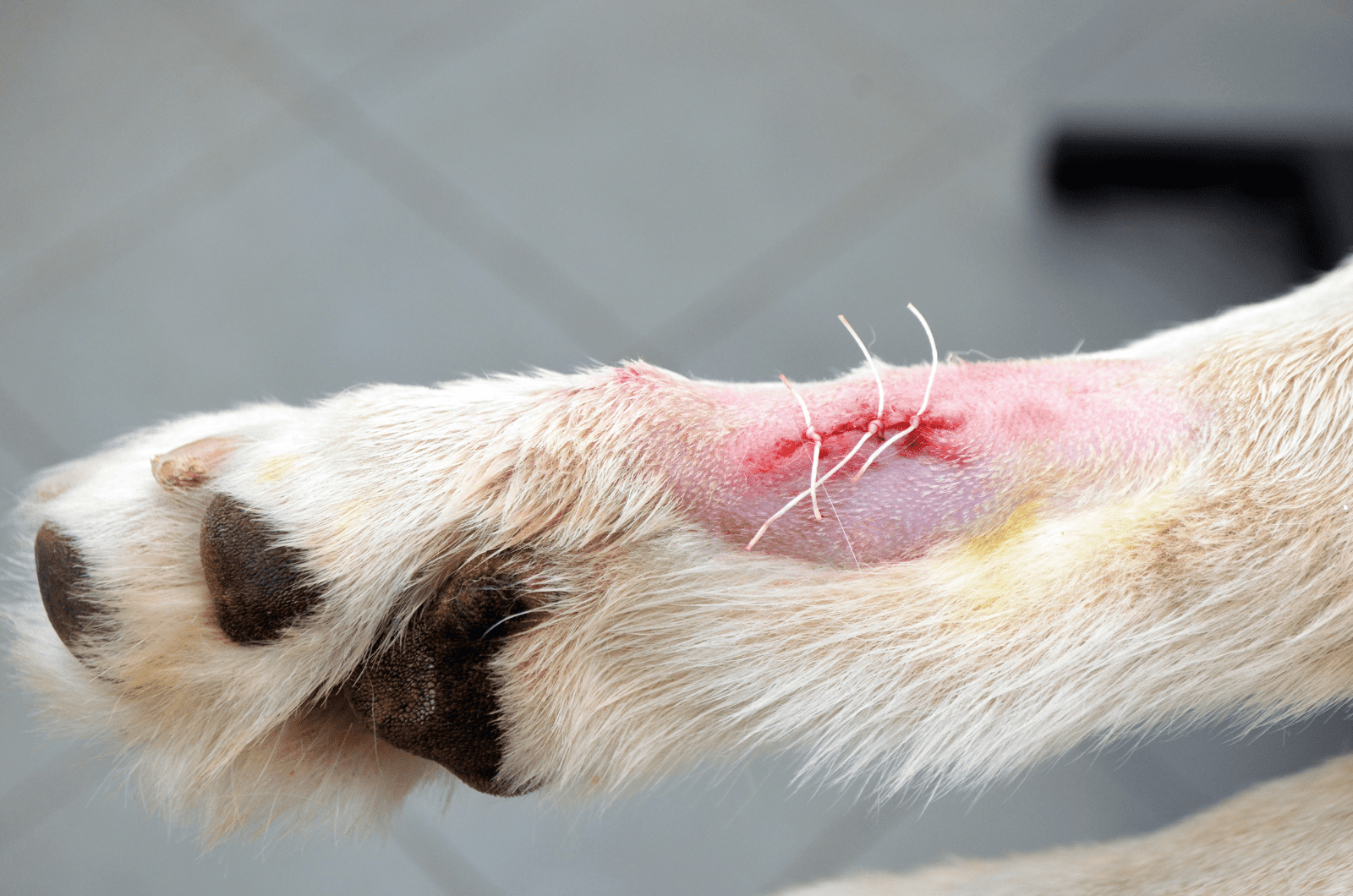
If you came here to read how to perform the surgery on your own, I won’t tell you that.
Dew claw surgery should only be performed by a licensed professional. If you’re really that interested in the surgery, and truly believe your dog will only benefit from it, ask your vet to do it for you. Don’t go around the town looking for a dew claw removal professional.
You’d be surprised by the audacity of some people to list dew claw removal as their special business!
What I want to tell you about the procedure is that it takes someone quite skilled to perform it.
Dew claws are still digits – they are the index digits, for example. Removing them is definitely invasive since it leaves significant consequences, and the recovery can be complicated. Just imagine if someone came up to you and said: I want to remove one of your toes. How would you feel?
Walking around with minus one toe would completely disrupt your balance, and it will take you some time to get used to the new situation.
The same happens to Great Pyrs after dew claw surgery.
The vet will basically cut off the dew claw’s bone, muscle, tendons, and nerves, sew up the wound, and let it recover on its own.
Recovery
What we don’t realize is that the process is not over yet. The dog’s paw must find a way to organize differently, and figure out how to walk without having front dew claws or rear dew claws. Most dogs, including the Great Pyrenees, have only their back feet dew claws removed.
In other words, the dog’s paw must regroup and adapt.
Sadly, dogs suffering from dew claw removal will have issues with arthritis in their senior years since the carpal ligaments in the paw need to stretch and learn how to function without a dew claw.
Yes, there will be blood in this process, and yes, the recovery will hurt.
Is it really necessary to put your Great Pyrenees under so much pressure? Declaws aren’t only appendages – they’re a sign your Great Pyrenees is a true purebred specimen of the Great Pyrenees breed.
Conclusion
Do you realize now how important the Great Pyrenees dew claws really are?
They aren’t just a remnant of an old time. They used to be of great help while climbing rocks, herding sheep, and running faster to protect their owner and livestock from wild animals.
In other words, dewclaws are pretty pawesome!
If you’re a Great Pyrenees owner, make sure you follow the guidelines of the official clubs, which say removing Great Pyrenees dew claws is prohibited.
Don’t be THAT owner. Let your dog have a choice, and his choice is to keep those wonderful double dew claws!
Read Next: Top 4 Great Pyrenees Breeders In Ontario
